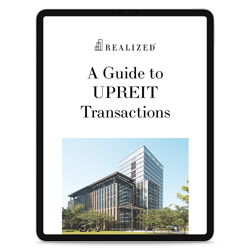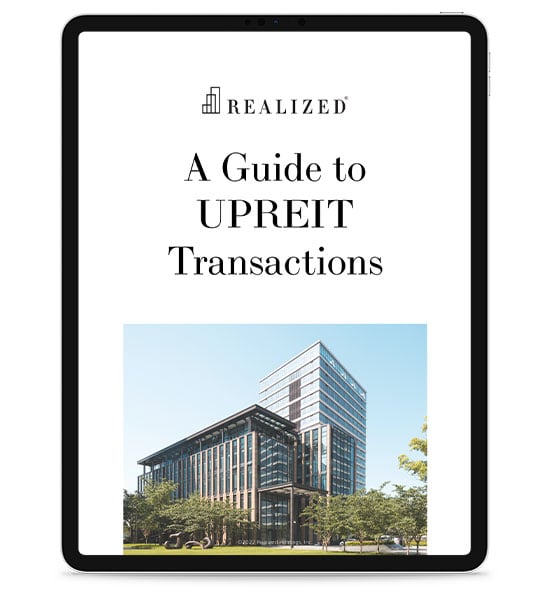
The early 1990s were a tough time to invest in commercial real estate.
Major macroeconomic factors such as the savings and loans crisis, a national recession, rising interest and capitalization rates, and declining property values combined for a perfect storm that effectively halted commercial lending.¹
This credit crunch helped fuel the rise of real estate investment trusts (REITs), with investors pooling their money to fund commercial property investments since institutional lending was unavailable or difficult to secure.
Today, REITs own more than $3.5 trillion in real property assets spread over more than 520,000 commercial properties.² This growth also has led to the rise of non-traded perpetual life net asset value (NAV) REITs, which differ from other types of equity REITs because they offer frequent net asset value repurchase options.
In this article we’ll take a closer look at how perpetual life NAV REITs work and how they differ from traditional equity REITs.
Features and Characteristics of Perpetual Life NAV REITs
Traditional equity REITs own and manage a wide range of commercial assets, but they have a finite life cycle since they often liquidate properties in order to generate additional capital. This targeted exit date requirement can curtail the growth of net asset value in acquired properties for traditional life-cycle REITs.
Perpetual life NAV REITs were created in the late 2000s to provide investors with more frequent valuations, as well as increased liquidity through systematic redemptions at net asset value per share. Private REITs, on the other hand, typically only provide investors liquidity on wind-down.
Although they are not traded on any securities exchange or other public trading platforms, non-traded perpetual life NAV REITs are still required to register their common stock and file reports with the Securities and Exchange Commission. These new REITs also have lower selling fees and more efficient fee structures for management.³ And whereas private non-traded REITs are for accredited and institutional investors, perpetual life NAV REITs are available to retail investors.
Perpetual life NAV REITs are typically offered by private non-traded real estate investment trust sponsors, as well as investment managers and real property investment companies. These products can vary by sponsor, but they tend to share some common characteristics:
- Net asset value. NAV is calculated either daily or monthly by independent third parties. NAV REITs with daily valuations typically offer purchasable shares each day, while NAV REITs with monthly valuations offer purchasable shares each month.
- Systemic redemptions and liquidity. Redemptions can occur daily or monthly depending on the REITs valuation cycle. Additional stipulations can apply, such as a per-shareholder redemption limit to avoid creating liquidity constraints.
- Different share classes. NAV REITs often have varying share classes of common stock to accommodate a wider range of investors, who can select the share type that best meets their investment strategies and risk profiles. Shares can have either higher upfront selling commissions with lower management fees or lower upfront commissions with a higher dealer-manager fee structure. However, most selling, management, and servicing fees for perpetual life NAV REITs are capped at 8.75 percent.⁴
A few of the risk factors for perpetual life NAV REITs include volatility in various commercial real estate sectors that could adversely affect the net asset value of properties under management, as well as limited disposition and transferability of shares. These REITs also can experience negative performance due to unforeseen events such as the ongoing Covid-19 pandemic that has adversely affected business operations across a variety of commercial real estate sectors.
The Bottom Line
Perpetual life NAV REITs come with some investor-friendly characteristics that have helped distinguish them from other traditional traded private equity REITs, such as the potential for increased liquidity through regularly occurring redemptions, lower fees, and varying share classes. However, perpetual life NAV REITs are complex legal structures, and investors should approach them with a calculated and disciplined approach.
Sources:
1. The Evolution and Development of Equity REITs, University of Massachusetts Amherst, https://scholarworks.umass.edu/cgi/viewcontent.cgi?article=1037&context=jhfm
2. REIT Statistics, Millionacres, https://www.millionacres.com/research/reit-statistics/
3. The Past, Present and Future of Non-Traded NAV REIT Structure, Goodwin Law, https://www.goodwinlaw.com/publications/2020/01/01_23-the-past-present-and-future-of-non-traded
4. Current NAV REIT Features, Goodwin Law, https://www.goodwinlaw.com/publications/2020/01/01_23-the-past-present-and-future-of-non-traded
This material is for general information and educational purposes only. Information is based on data gathered from what we believe are reliable sources. It is not guaranteed as to accuracy, does not purport to be complete and is not intended to be used as a primary basis for investment decisions. It should also not be construed as advice meeting the particular investment needs of any investor. Realized does not provide tax or legal advice. This material is not a substitute for seeking the advice of a qualified professional for your individual situation. Costs associated with a 1031 transaction may impact investor’s returns and may outweigh the tax benefits. An unfavorable tax ruling may cancel deferral of capital gains and result in immediate tax liabilities. All investments have an inherent level of risk. The value of your investment will fluctuate with the value of the underlying investments. You could receive back less than you initially invested and there is no guarantee that you will receive any income. There is no guarantee that companies that can issue dividends will declare, continue to pay, or increase dividends. A REIT is a security that sells like a stock on the major exchanges and invests in real estate directly, either through properties or mortgages. REITs receive special tax considerations and typically offer investors high yields, as well as a highly liquid method of investing in real estate. There are risks associated with these types of investments and include but are not limited to the following: Typically no secondary market exists for the security listed above. Potential difficulty discerning between routine interest payments and principal repayment. Redemption price of a REIT may be worth more or less than the original price paid. Value of the shares in the trust will fluctuate with the portfolio of underlying real estate. Involves risks such as refinancing in the real estate industry, interest rates, availability of mortgage funds, operating expenses, cost of insurance, lease terminations, potential economic and regulatory changes. This is neither an offer to sell nor a solicitation or an offer to buy the securities described herein. The offering is made only by the Prospectus.


